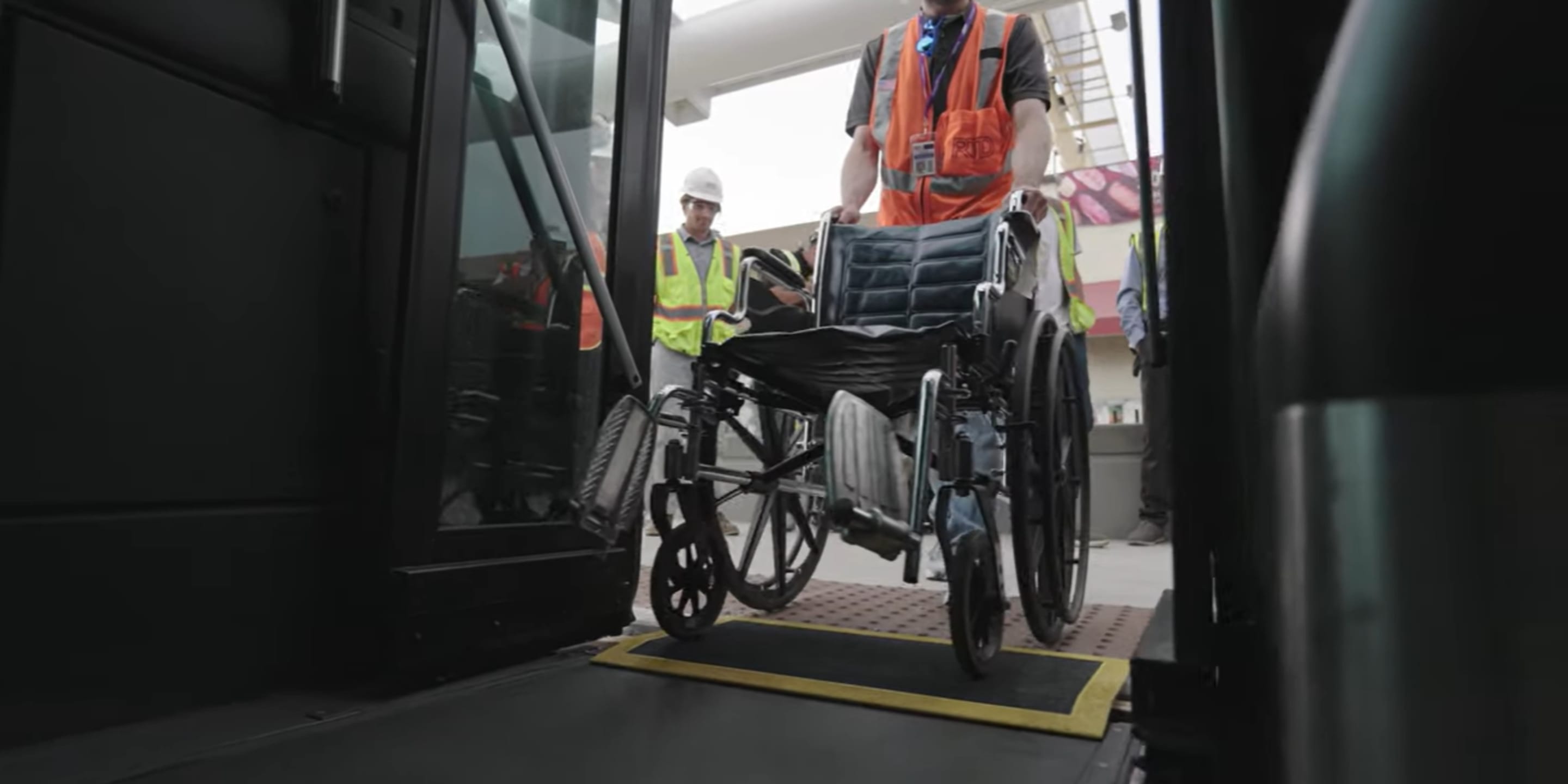
Real accessibility is ‘how a space actually functions for people’
Real accessibility is ‘how a space actually functions for people’
Accessibility is not as simple as checking a few boxes. It is about creating spaces that everyone can use comfortably, safely and independently.
The Americans with Disabilities Act (ADA), passed in 1990, set nationwide standards for accessibility-required features such as ramps, tactile paving and landing pads, but those standards are just the starting point. True accessibility comes from thoughtful, intentional design that works in practice.
“The ADA sets the standard, but real accessibility comes from looking at how a space actually functions for people,” said Gabe Christie, RTD’s ADA Manager.
From the point of view of someone using a wheelchair, for example, a sidewalk with heavy cracks, unevenness or obstacles sticking out can be incredibly difficult to navigate. For someone who is blind or visually impaired, the absence of clear signage or detectable warning strips can turn a straightforward path into a barrier.
RTD’s work with Bus Rapid Transit (BRT) along Colfax is an area where accessibility is still evolving. BRT stations are built with raised platforms designed for level boarding, where the bus floor is level with the platform and passengers can board without having to climb steps. Level boarding benefits customers with mobility aids, parents with strollers, travelers with luggage and anyone who may find steps challenging. With Colfax BRT, the aim is to improve accessibility for RTD passengers by providing level boarding.
Because RTD’s current bus fleet was not originally designed to provide level boarding at these platforms, the agency is using creative solutions to bridge the gap on Colfax. This includes reprogramming buses, so doors align more closely with the platform height and, in the meantime, using bridge plates or ramps to provide the smoothest boarding experience possible.
Sometimes creative fixes like these are the best immediate option when a complete infrastructure change is not possible.
“There are times when I cannot fix the accessibility of a space in its entirety,” Christie said. “But I can offer creative solutions to help make that space more accessible.”
These solutions work alongside permanent design features such as tactile paving for the blind, auditory crosswalk signals, protected pedestrian crossings and shelters wide enough to accommodate a wheelchair. Considerations like making sure a person using a wheelchair’s path of travel is not only accessible, but also intuitive, can make a significant difference.
For RTD, this mix of long-term improvements and quick thoughtful adjustments reflects a broader commitment to accessibility. Each change, whether it is a full rebuild or temporary fix, helps create a transit system where every customer can move through the space with ease and confidence.